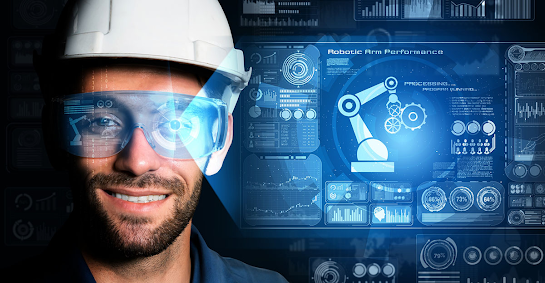Revolutionizing Industrial Maintenance: The Role of AI in Predictive Maintenance
Introduction
In the realm of industrial operations, maintenance holds a critical role in ensuring smooth functioning, productivity, and safety. Traditional maintenance approaches often involve reactive or preventive strategies, which may lead to costly downtime and inefficiencies. However, with the advent of Artificial Intelligence (AI), particularly in predictive maintenance, industries are experiencing a paradigm shift. This article delves into the transformative impact of AI in predictive maintenance, exploring its key concepts, benefits, challenges, and future prospects.
Understanding Predictive Maintenance
Predictive maintenance (PdM) leverages data analytics, machine learning algorithms, and AI to predict equipment failures before they occur, thereby optimizing maintenance schedules and minimizing unplanned downtime. Unlike traditional maintenance approaches, which rely on fixed schedules or reactive responses to failures, predictive maintenance anticipates issues based on real-time data, enabling proactive interventions.
The Role of AI in Predictive Maintenance
1. Data Collection and Monitoring: AI in predictive maintenance gathers data from various sources, including sensors, IoT devices, and historical maintenance records. These data streams are continuously monitored to detect anomalies, patterns, or early signs of equipment degradation.
2. Machine Learning Algorithms: AI employs sophisticated machine learning models, such as supervised learning, unsupervised learning, and reinforcement learning, to analyze vast datasets and identify patterns indicative of potential failures. These algorithms adapt and improve over time, enhancing the accuracy of predictions.
3. Anomaly Detection: AI-powered anomaly detection techniques enable early identification of deviations from normal operating conditions. By detecting subtle changes in equipment behavior, anomalies can be flagged for further investigation, preventing catastrophic failures.
4. Condition Monitoring: AI facilitates real-time condition monitoring by analyzing equipment performance metrics, such as temperature, vibration, and pressure. By continuously assessing the health of assets, maintenance activities can be optimized based on actual asset conditions.
Benefits of AI in Predictive Maintenance
1. Reduced Downtime: By predicting equipment failures in advance, AI-driven predictive maintenance minimizes unplanned downtime, thereby enhancing operational efficiency and productivity.
2. Cost Savings: Proactive maintenance based on AI predictions reduces the need for costly emergency repairs and extends the lifespan of assets, resulting in significant cost savings for organizations.
3. Improved Safety: Timely identification of potential equipment failures enhances workplace safety by preventing accidents and mitigating hazards associated with malfunctioning machinery.
4. Optimized Maintenance Scheduling: AI algorithms optimize maintenance schedules by prioritizing tasks based on asset criticality and predicted failure probabilities, ensuring resources are allocated efficiently.
Challenges and Considerations
1. Data Quality and Integration: The effectiveness of AI in predictive maintenance hinges on the availability and quality of data. Integrating disparate data sources and ensuring data accuracy remain significant challenges for implementation.
2. Algorithm Interpretability: Interpreting AI-generated predictions and recommendations is crucial for gaining trust and acceptance from maintenance personnel. Ensuring transparency and explainability of algorithms is essential for widespread adoption.
3. Deployment and Scalability: Implementing AI solutions for predictive maintenance requires careful planning, infrastructure investment, and organizational buy-in. Scaling AI initiatives across different assets and facilities poses logistical challenges that need to be addressed.
4. Human Expertise: While AI augments decision-making processes, human expertise remains indispensable in interpreting complex maintenance scenarios, validating predictions, and executing maintenance tasks effectively.
Future Outlook
The integration of AI in predictive maintenance is poised for continued growth and innovation. Advancements in AI algorithms, sensor technologies, and connectivity infrastructure will further enhance the accuracy and scalability of predictive maintenance solutions. Additionally, the convergence of AI with other emerging technologies such as edge computing and digital twins holds promise for creating more intelligent and autonomous maintenance ecosystems.
Conclusion
AI-powered predictive maintenance represents a transformative approach to maintenance management, enabling organizations to transition from reactive and preventive strategies to proactive, data-driven interventions. By harnessing the power of AI algorithms, industries can unlock operational efficiencies, cost savings, and safety enhancements, ultimately driving competitiveness and sustainability in the digital era. However, addressing challenges related to data quality, algorithm interpretability, and deployment scalability is essential for realizing the full potential of AI in predictive maintenance. Embracing AI-driven innovation, organizations can pave the way for a future where maintenance is predictive, efficient, and optimized for success.




Comments
Post a Comment